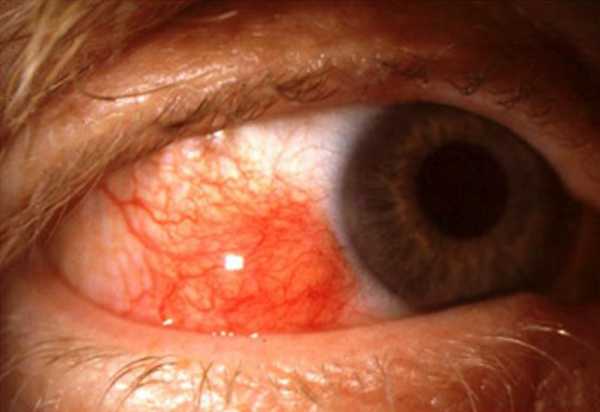
Nodular Scleritis
Scleritis is of two types:
1. Anterior scleritis
2. Posterior scleritis
The anterior scleritis involves the anterior or front parts of the eye, while the posterior scleritis involves the posterior or the back parts of an eye. Depending upon their causative factors, signs and symptoms, these two types are further subdivided into different forms.
Systemic Associations with Scleritis
Scleritis may be a result of any injury or trauma to the eye, yet most of the cases have been found to be associated with any systemic illness such as:
1. Rheumatoid arthritis.
2. Ankylosing spondylitis.
3. Systemic lupus erythematosis.
4. Wegener’s granulomatosis.
5. Polyarteritis nodusa.
Description of Nodular Scleritis
Nodular scleritis is a type of anterior scleritis in which there is a formation of small nodules on the sclera, as its name indicates. These nodules are clearly visible on the surface of the eye, or sometimes by lifting the upper lid or lowering the lower lid.
Like other forms of scleritis, nodular scleritis also occurs more commonly in association with the underlying systemic illness. It is more common in women than in men.
Causes of Nodular Scleritis
Important causative factors for nodular sclerosis include:
1. Systemic illness.
2. Trauma.
3. Bacterial eye infections.
4. Fungal infections.
5. Viral infections.
6. Foreign bodies.
7. Chemical Eye Injury
Signs and Symptoms of Nodular Scleritis
Nodular scleritis may present with the following symptoms:
1. Red eye with nodule or pump formation at the white part of the eye.
2. Pain in the eye.
3- Foreign body sensation and burning sensation
4. Pain in the forehead.
5. Pain in eyebrows.
6. Pain in jaws.
7. Sleeplessness due to pain.
8. Excessive tear or lacrimation.
9. Increased sensitivity to light or Photophobia.
10. Disturbed vision.
11. Bluish or purple hue in sclera.
Diagnosis of Nodular Scleritis
The diagnosis of nodular sclerosis is made due to presence of nodules on the sclera. The patient is examined using the slit lamp which is a specialized equipment used for examining the eyes.
The patient sits on one side of the slit lamp and the doctor is on the other side. The eyes are examined with the help of the light source and microscope attached in it.
The patient may be advised certain other tests to rule out the underlying systemic disease so as to focus the treatment to the root cause.
Nodular Scleritis Treatment
1- For nodular sclerosis, the treatment begins with the non-steroidal anti-inflammatory drugs ( NSAIDs). These can be used in different combinations. The patient may also be prescribed certain drugs for protecting the stomach mucosa in order to prevent the side effects like ulcers.
2- Artificial tears especially preservative free artificial tears can be added to ease the foreign body sensation and burning sensation.
3- If the treatment goes unresponsive, these non-steroidal anti-inflammatory drugs are replaced by the corticosteroids. Sometimes, along with the oral steroids, injectable steroids are also given; the site of injection been under the conjunctiva (the thin layer covering the sclera in front) or in the eye ball. These are reported to be helpful in treating the condition.
4- If the steroidal therapy also goes on unresponsive, the next choice comes out to be the immunosuppressive drugs which act by suppressing the immune system of the patient’s body as many of the systemic illnesses described above are actually the result of the autoimmune process (in which the body’s own defense mechanism starts combating the body’s own cells).
The immunosuppressive drugs can also be prescribed in different combinations. Artificial tears may be helpful in relieving the pain.
Complications of Nodular Scleritis
Nodular sclerosis may lead to following complications
1. Involvement of other structures of the eye like cornea or uvea (the middle layer of an eye).
2. Cataract (lens opacity).
3. Glaucoma (increased pressure within the eye).
4. Visual disturbance.
5. Thinning of the sclera.
Prognosis of Nodular Scleritis
The more severe the extent of scleritis, the poorer is the prognosis. Severe nodular scleritis can lead to blindness.
However, patients having a mild or moderate disease do not show any signs of visual loss and are fortunate enough to maintain a good vision. Usually, if the scleritis is due to any systemic illness, its fate follows that of the underlying disease.
However, it is always better for any medical condition to be diagnosed at an earlier stage, when it is easy to manage it rather than at the time, when the disease has already gone so far beyond the limits of medical science.




